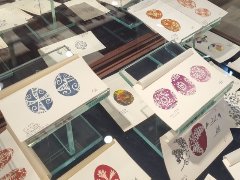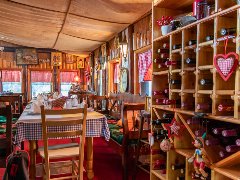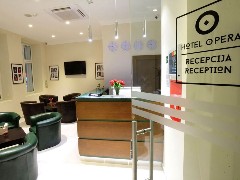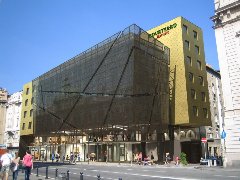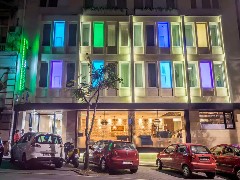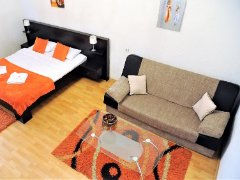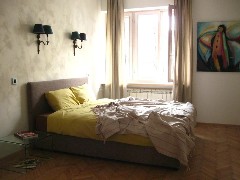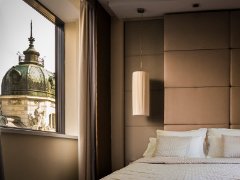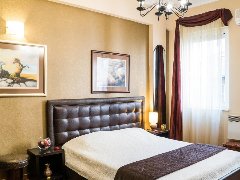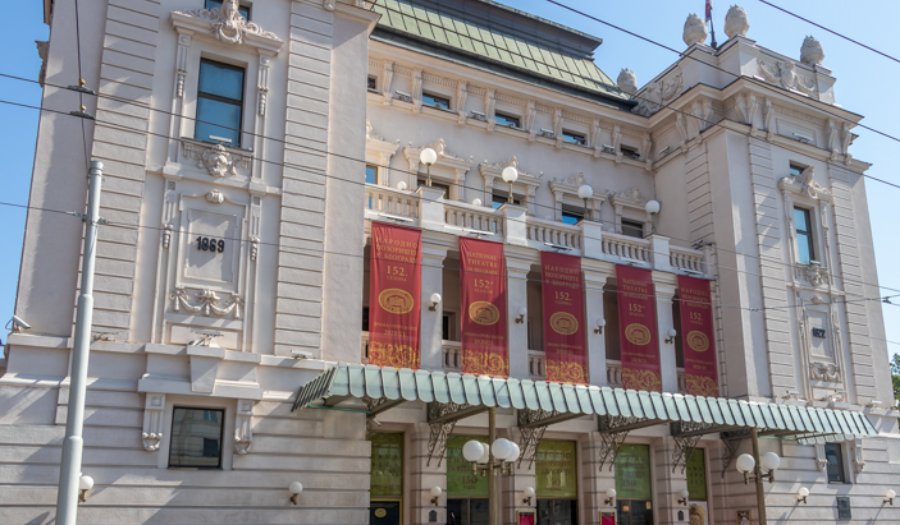
The desire to establish a permanent professional theater in Belgrade dates back to 1841. After almost three decades of performing plays at various places in the capital, on 18th August, 1868, Prince Milan Obrenovic laid the foundation stone for the construction of the National Theater building, at the place where the Stambol Gate was located until 1866 - one of the four gates on the exit from the Belgrade town. The first play in the new building was performed one year after the start of the construction - on 30th October 1869, and since then, there have been three artistic units in the National Theater: opera, ballet and drama.
The interior decoration of the first building was achieved on the basis of indirectly accepted Italian models, which emphasized the decor and comfort of the theater. Special attention was given to decorating the royal loge with draperies, crowns and thrones procured in Viennese art workshops. The ceilings and parapets of the loges were covered with lavish gilding decorated with gold, while the light of the "hundred candles" chandeliers contributed to the festive atmosphere of the theater itself. A special part of the theater decoration was painted scenic curtains, made according to the drawings of the most important local painters, which themselves represented some kind of artistic works. The constant need to beautify the most popular Belgrade building of that time was realized through numerous renovations and finishing of the original interior. Thus, in 1905, a new decorative painting on the scene, the theater and the foyer was made. According to the drawings of Dragutin Inkiostri Medenjak, the first Serbian decorative painter who decorated numerous Belgrade palaces with his skill, decorations inspired by motifs from folk art, ornamentation and tradition were made.
The desire to establish a permanent professional theater in Belgrade dates back to 1841. After almost three decades of performing plays at various places in the capital, on 18th August, 1868, Prince Milan Obrenovic laid the foundation stone for the construction of the National Theater building, at the place where the Stambol Gate was located until 1866 - one of the four gates on the exit from the Belgrade town. The first play in the new building was performed one year after the start of the construction - on 30th October 1869, and since then, there have been three artistic units in the National Theater: opera, ballet and drama.
The interior decoration of the first building was achieved on the basis of indirectly accepted Italian models, which emphasized the decor and comfort of the theater. Special attention was given to decorating the royal loge with draperies, crowns and thrones procured in Viennese art workshops. The ceilings and parapets of the loges were covered with lavish gilding decorated with gold, while the light of the "hundred candles" chandeliers contributed to the festive atmosphere of the theater itself. A special part of the theater decoration was painted scenic curtains, made according to the drawings of the most important local painters, which themselves represented some kind of artistic works. The constant need to beautify the most popular Belgrade building of that time was realized through numerous renovations and finishing of the original interior. Thus, in 1905, a new decorative painting on the scene, the theater and the foyer was made. According to the drawings of Dragutin Inkiostri Medenjak, the first Serbian decorative painter who decorated numerous Belgrade palaces with his skill, decorations inspired by motifs from folk art, ornamentation and tradition were made.




